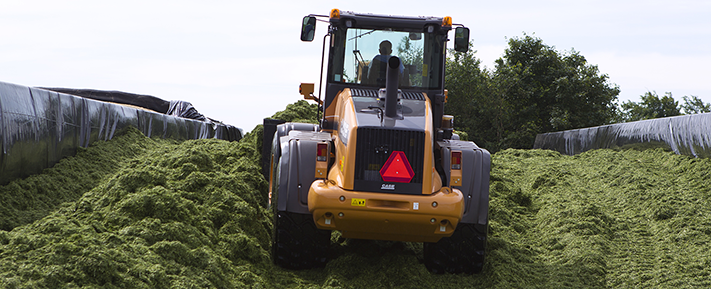Grow good grass – grass that raises your milk yield
The profitability of a dairy herd depends on the quality of its nutrition. For good health and high milk yields, dairy cows need a balanced diet of roughage and concentrates. But it is the quality of the feed – whether fresh or conserved – that determines the quantity and cost of your herd’s fodder needs. First and foremost, your cows need grass that is easily digestible – grass with a high cell-wall content (NDF) and highly digestible cell walls (DNDF) – because digestibility increases forage intake and milk output.
18/03/2016
Protein from grass
Protein is a vital component of dairy-herd diets. Protein helps microorganisms in the rumen convert roughage into nutrients. When cows get too little protein, they lose bodyweight, their milk yields decline and they are harder to get with calf. The most common source of protein is grass or clover-grass. Other good sources of protein are lucerne and red or white clover.
A combination of grass and maize is often good because maize contains starch, which provides extra energy. Forage maize is popular because it is a high yielding crop. The downside is that maize crop is ready for harvest late in the season and contains relatively little protein.
Silage chop length
In order to keep the cow’s very important rumen functions intact, silage grass should never be cut too short. The chop length has an effect on bovine health. If it is too short, there is a risk of sub-clinical acidosis, especially if the grass’s sugar content is too high and the feed ratio contains maize or grain as well.

Grassland management influences feeding value
Grass silage can only be as good as the sward from which it is cut. In practice the feed value of silage will be less than the original sward because the processes of harvesting, fermentation, and feeding inevitably lead to losses in quantity and quality. Also bear in mind that grassland quality declines year by year, and that the only way to maintain yield and quality is through regular re-sowing or overseeding. An effective way to improve the success of your re-sowing or overseeding programme is to choose seeds boosted with our new ProNitro® seed coating.
The single most cost-effective dairy feed is grass grown and managed as pasture. Swards of ryegrass, for example, can be highly productive, yielding large quantities of palatable and nutritious feed. Tests show that adding white clover to the sward improves overall pasture yield and quality. And in areas where ryegrass may not survive the winter, it may be necessary to include other species such as festulolium, tall fescue, and timothy.
Learn more about grassland management in our brochure More Milk from Grass.
Grass is a vital element of your dairy herd’s diet
To sum up, a combination of grass and maize provides an efficient roughage diet. Feeding your herd on two crops also spreads the risk of seasonal weather variations. However, if you cannot grow forage maize on your farm, your best option may well be to raise your milk or beef cattle on grass only.
Click here to find a ForageMax® mixture to raise your milk yield.
